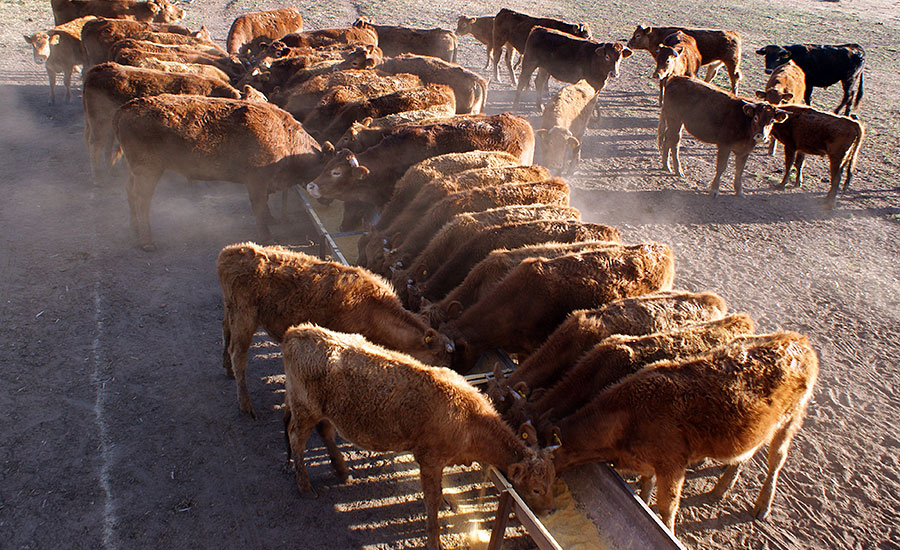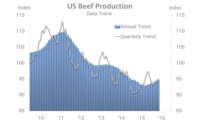As beef producers continue to improve efficiency, understanding the process of growth and development is crucial as cellular skeletal muscle characteristics, such as tenderness, can ultimately have an impact on consumer acceptance of meat products.
In order for skeletal muscle mass to increase, there must also be an increase in the number of nuclei in the muscle fiber, which are provided from satellite cells. The proliferation and fusion of muscle satellite cells have been shown to be a rate limiting step to postnatal skeletal muscle growth.
To evaluate the change in skeletal muscle fiber types and satellite cell populations, longissimus dorsi biopsies were collected from 10 single source 16 month-old feedlot steers every two weeks during a 56-day window of the finishing period, during which the steers were fed a traditional steam-flaked corn-based finishing ration.
The longissimus dorsi sample that was collected was used to evaluate skeletal muscle characteristics using gene and protein expression of myosin heavy chain isoforms found in beef skeletal muscle, as well as immunohistochemical analysis evaluating muscle fiber type distribution and cross-sectional area, and satellite cell populations.
There was an increase in the abundance of myosin heavy chain (MHC) type I, IIA and IIX gene expression on days 42 and 56. An increase in abundance of MHC-I and II protein was observed during the feeding period. Immunohistochemical staining showed a decrease in the proportion of type I fibers with an increase in the combination of type IIA and IIX fibers from day 1 to day 56. Muscle fiber cross-sectional area increased from day 1 to day 56. The density of PAX7-positive satellite cells increased as days on feed increased. The density of Myf5- and dual-positive satellite cells decreased on days 42 and 56. Total nuclei density was not different on day 1 and day 56, but the density of nuclei associated with the muscle fibers increased as days on feed increased.
These data indicated that during the 56-day window of the finishing phase in the study, satellite cells fused into muscle fibers to support hypertrophy of muscle fibers as evidenced by the decrease in Myf5- and dual-positive satellite cells and increase in nuclei associated with muscle fibers.
In addition, this observed change in satellite cell activity was associated with an increased expression of MHC types I, IIA and IIX found in bovine skeletal muscle with a muscle fiber proportions shifting to more type IIA and IIX fibers, resulting in more fast twitch, glycolytic muscle fibers with larger cross-sectional area. Greater cross-sectional area of skeletal muscle fibers can lead to decreased tenderness in meat products.
When considering fiber type in relation to meat quality, type I fibers have a greater amount of associated lipid content. Therefore, muscles with a greater proportion of type II fibers have a lower percentage of fat to contribute to flavor of the meat and other palatability parameters. Type I fibers also have smaller cross-sectional areas compared to type II fibers.
Because of the effect of skeletal muscle growth on potential dining experiences of consumers, producers should consider this growth pattern when selecting animals to be used for certain programs, as well as when considering the use of growth-promoting technologies and the point of the feeding period these technologies will be implemented. NP






